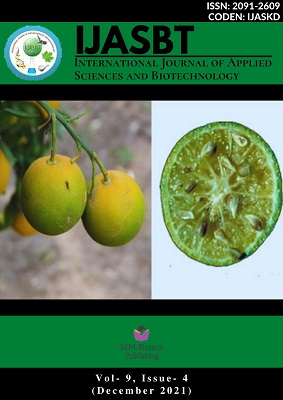Assessment of Trap Crops for The Wheat Bug, Nysius huttoni Management: A Cage Study
DOI:
https://doi.org/10.3126/ijasbt.v9i4.41893Keywords:
Alyssum, Brassica crops, wheat bu, integrated pest managementAbstract
The wheat bug, Nysius huttoni, is an endemic New Zealand insect pest. Its feeding can seriously reduce crop establishment in forage A cage study was conducted in Lincoln University, New Zealand to evaluate the pest’s host preferences on four plant species. Kale plants (Brassica oleracea) were used as a potentially susceptible control and other four trap plants were tested to evaluate as potential trap-plants. These were: Lobularia maritima (alyssum), Triticum aestivum (wheat), Coriandrum sativum (coriander) and Trifolium repens (white clover). The alyssum plant was more attractive to the wheat bug. The survival rate and preferences of the wheat bug was significantly better than other four plants. The deployment of such flowering trap crops can potentially trap the wheat bug and also provide multiple ecosystem services (ES) in an agro-ecosystem. The findings can be used to develop the wheat bug management protocol and also potentially provide ecosystem services in brassica fields.
Downloads
Downloads
Published
How to Cite
Issue
Section
License
Copyright (c) 2021 International Journal of Applied Sciences and Biotechnology

This work is licensed under a Creative Commons Attribution-NonCommercial 4.0 International License.




